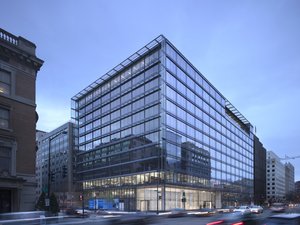
This contributed post comes from Rob Silverberg, CTO of Digital Communities at Dell Technologies. Silverberg leads the smart cities division for Dell's state and local government and education team. In his role, he works with local government customers nationwide to help them agencies understand how the company's technologies can help them achieve their goals. The article was edited for length and brevity.
Last week, the D.C. Metro area experienced nearly a month’s worth of rain in an hour, leading to massive flash flooding and widespread disruption. This was just days before tropical storm Barry dumped up to 15 inches of rain in some parts of Louisiana.
These events serve as a reminder that natural disasters continue to be a very real danger and city governments must be preparing to address them before they happen. According to the National Oceanic and Atmospheric Administration. in 2017, natural disasters caused a record $306 billion in damage in the U.S. alone.
Without the right IT infrastructure and procedures in place, local governments are left vulnerable and scramble to respond to the effects a natural disaster in real time. This can lead to confusion, disorder and residents feeling let down by their government during times of need, especially if IT infrastructure goes down and the community is unable to connect to critical information.
How does a city government ready itself for a natural disaster, particularly when it comes to technology? While establishing a strong, reliable disaster prevention plan can take years to implement, there are several immediate steps cities should take to prepare:
Today: Create a disaster recovery plan. The first step for any city government in the path of a natural disaster is to ensure all systems are backed up and a recovery plan is in place should the systems fail.
Power outages are a common part of most natural disasters, so cities should have a redundant data centers located in different physical locations — ideally in different states and different parts of the country — and should have a way to automatically access those systems if they go down.
Some industry experts are pushing the need for IT resilience in preparation for these types of incidents, recommending CIOs consider continuous availability, workload mobility and multi-cloud/hybrid cloud agility in addition to baseline backup and recovery strategy.
Multi-cloud environments that provide this redundancy through various data storage options are especially important in cities located on coastlines or near the Gulf of Mexico. These municipalities know the risks of their location, and should be actively preparing for potential hurricanes or flooding by ensuring data systems have a backup and plans are in place should a storm hit.
This month: Conduct preparedness drills. The principle of "practice makes perfect" applies to local governments preparing for natural disasters. An easy, relatively low-cost way for governments to do this is to conduct drills before a disaster, so familiarity with procedures and parties involved remain fresh. Creating a similar situation and running through mock scenarios helps ensure all disaster teams are ready to act and that necessary technologies work together inter-operably.
These drills give cities opportunities to think through issues that may have been overlooked, such as the realization that evacuation plans should be announced in multiple languages. One city in the state of California recently learned this during a natural disaster, when evacuation plans were announced only in English. Since a number of areas in the city had non-English speakers, the plans were never understood. These small details can be the difference in life or death for citizens during a disaster, so practicing the response effort and taking it seriously is of utmost importance.
By implementing smart city technologies such as AI and machine learning, city governments can develop models used to predict flooding, better manage storm water run-off and levy systems, map hurricane patterns and more.
This year: Get smarter in the future. The unfortunate reality is that natural disasters are not going away. However, there is hope, as new technologies are equipping cities to protect their communities from severe storms and other major disasters. By implementing smart city technologies such as AI and machine learning technologies, city governments can develop models used to predict flooding, better manage storm water run-off and levy systems, map hurricane patterns and more, preventing city leaders from being caught off guard.
One example of utilizing AI in smart city initiatives is the city of Houston’s emphasis on AI to defend against natural disasters. Its flood detection sensors on light poles and elevated surfaces will transmit data and quickly alert the public if flooding is detected, and its roadway flood warning system, an advanced model to combat flood threats using high water sensors and advanced traffic signaling systems, will provide data to partner agencies and the public through a real-time traffic website.
The Future of Disaster Prevention
Cities across the nation are recognizing the importance of smart city technologies in preparing for natural disasters. As these cities continue to implement AI, machine learning and environmental sensors, the wealth of data collected allows for more efficient mapping and tracking of natural disasters. The data collected allows city governments to stay informed about upcoming disasters and plan to address them prior to the actual event, keeping citizens safe and ensuring plans are in place to address potentially dangerous events.
These tips are immediately actionable steps that municipalities should be taking to immediately strengthen defenses against major natural disasters. Storms and floods will continue to pose a challenge to local governments, but with the right infrastructure and tools in place, it’s possible to minimize or even eliminate the impact they cause on local communities.




